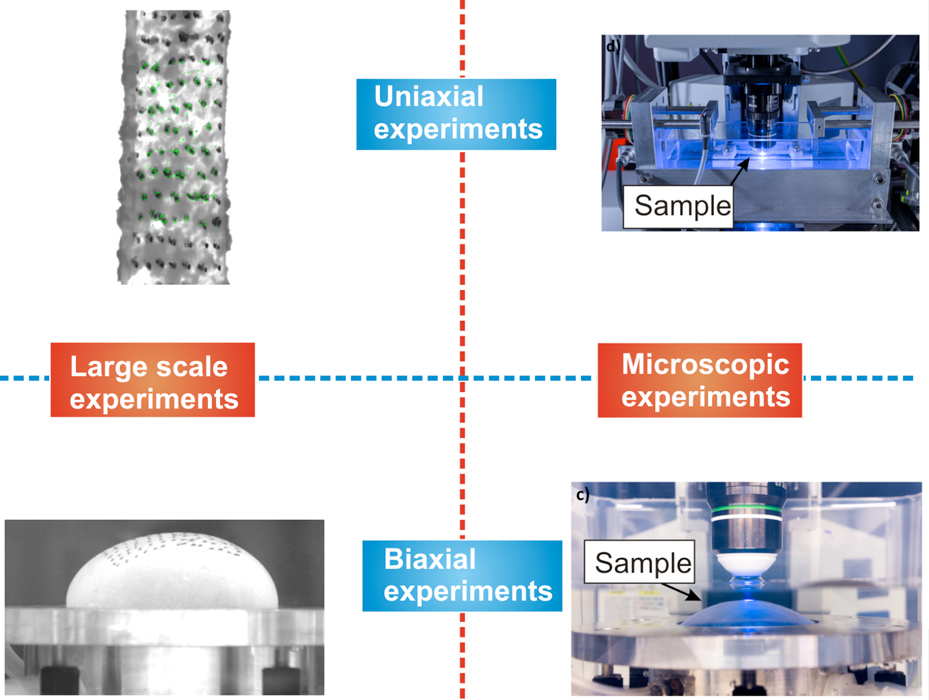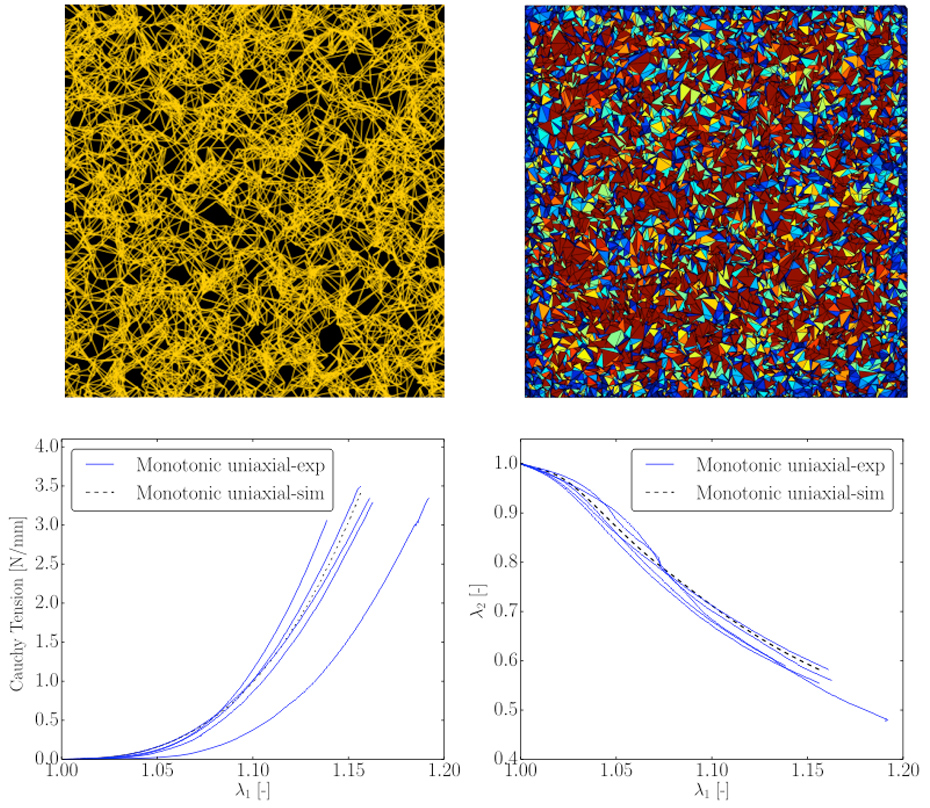Comparative Biomechanics
Objective and biomedical framework
The mechanical characterization of soft collagenous membranes such as the fetal membrane and the liver capsule has become relevant in recent years for the development of numerical simulations of clinically-relevant procedures and crash-impact scenarios. Soft collagenous membranes consist typically of a dense network of randomly oriented collagen fibers embedded in a viscous matrix. Our objective is to gain insight in the influence of the microstructure on the macroscopically observed nonlinear behavior as well as on the functionality of these tissues. To establish appropriate numerical models for simulations, we use the approaches of a continuum model and a discrete model. The effect of local defects such as holes will be investigated experimentally and with both modeling techniques.
Mechanical Characterization
Despite a comparable collagen content of the fetal membrane and the liver capsule, their mechanical response in terms of high-strain stiffness differs by one order of magnitude. Understanding the differences of the mechanical behavior requires a comprehensive mechanical comparison under different loading conditions in various configurations. Besides the large scale tests with a custom built stretching set-up and a so-called inflation device, in-situ experiments under a multiphoton microscope provide insight in the rearrangement of the collagen fibers and the characteristic water outflow mechanisms. Figure 1 shows the different experimental configurations (uniaxial on the top and biaxial on the bottom) within the different scales of the extracted data. Tension and strain data get acquired on the large scale and fiber reorientation data on the micorscopic scale. Microscopic images modified from Mauri et al. (2015).

Numerical models
Two different approaches are considered for the numerical modeling of the experiments; a discrete model based on random cross-linking and fiber distribution embedded in a matrix and a continuum models that accounts for different fiber families in a viscous matrix. The model parameters are determined based on the data obtained in the large-scale experiments. The numerical models are applied for simulations of local defects under different loading conditions. The model predictions and the experimental data are compared in the far field as well as in the near field in order to improve the understanding of local deformation mechanisms at a defect. Figure 3 shows the discrete network model with the fibers shown in yellow, modified from Mauri (2015). The areal strain is shown beside it for the different segments ranging from blue to red for the lowest and the larges areal strain. In the bottom, the experimental data in blue and the fit with the continuum model in dashed black is shown for monotonic uniaxial experiments. The fit captures the nonlinear tension-stretch response as well as the large lateral contraction (Poisson’s ratio up to 7!), which is typical for biomembranes.

Project Lead
Kevin Bircher